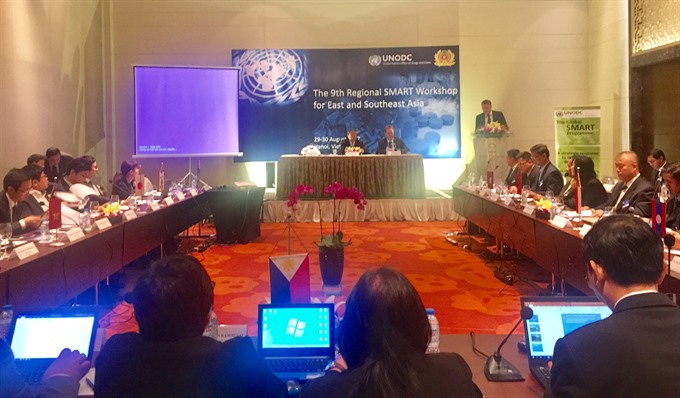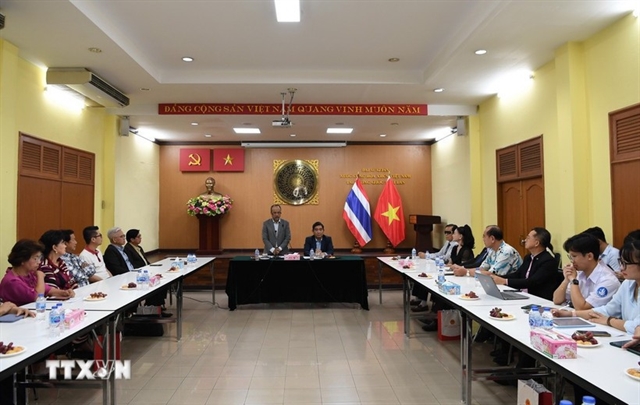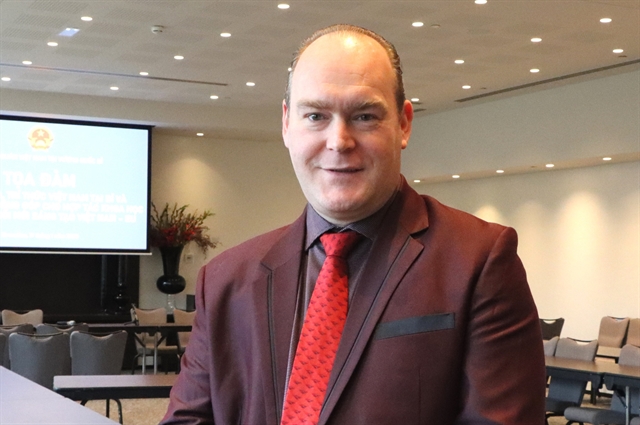 Politics & Law
Politics & Law

Senior government officials from ASEAN member countries, China, Japan, South Korea, Australia, Canada and the US participated in a two-day conference on the global synthetic drug problem in Hà Nội.
 |
| Senior government officials from ASEAN member countries, China, Japan, South Korea, Australia, Canada and the US participated in a two-day conference on the global synthetic drug problem in Hà Nội. — VNS Photo Khánh Dương |
HÀ NỘI — Senior government officials from ASEAN member countries, China, Japan, South Korea, Australia, Canada and the US participated in a two-day conference on the global synthetic drug problem in Hà Nội.
The forum, which kicked off on Tuesday, gave participants a platform to talk about the most recent synthetic drug trends in East and Southeast Asia, the world’s largest methamphetamine market. Several emerging synthetic drug substances in the region that have caused serious public health issues in other regions were also discussed.
Based on these discussions, governments are expected to come up with solutions to address the challenges.
Senior Colonel Hoàng Anh Tuyên, deputy director of Standing Office of Drug Control under the Ministry of Public Security, said that the past few years have seen a rise in illegal synthetic drug trafficking in East and Southeast Asia, and young people are experimenting with am-phetamine-type stimulus (ATS) and new psychoactive substances (NPs) instead of traditional drugs such as heroin and cocaine.
There are now more than 600 new psychoactive substances, a sharp increase, and a large number of them is not included in national and international control lists, Tuyên said, adding that countries around the world and in the region have to come up with effective solutions to the problem.
However, the capacity of nations and regions is uneven in the area of co-operation, analysis, information sharing, inter-synthetic drugs and psychoactive substances’ control.
Tuyên spoke highly of the important role that the United Nations’ Global Synthetics Monitoring: Analyses, Reporting and Trends (SMART) programme has played in capacity building, by providing necessary information and creating references for countries to formulate their policies.
“International resources for drug control are declining. Therefore, the effectiveness of the SMART programme depends highly on active participation of the member states and requires countries to enhance their decisive, active role in developing and implementing synthetic drug control policies and strategies, further strengthen ownership and direct participation in the development of regional drug initiatives and share responsibility to mobilise resources for this programme,” Tuyên said.
The use of synthetic drugs has become a serious concern of nations associated with the ASEAN, China, Japan, South Korea, Australia, Canada and the US as trade between these countries has increased, said Jeremy Douglas, regional representative of the United Nations Office on Drugs and Crime (UNODC) for Southeast Asia and the Pacific.
He proposed several solutions to promote regional and global drug prevention. Countries must have full data sources and synchronised information on drug use, he said. Unsynchronised data provided by agencies and organisations is a big hindrance to fully understanding measures that need to be taken to prevent drug use.
He stressed on the importance of countries working together to understand the drug use and drug production situation, to tackle trans-national crimes, and to roll out strategic solutions.
The SMART programme was launched by the UNODC in 2008 as a response to the synthetic drug problem. The programme enhances the capacity of targeted member states in priority regions by providing technical support to laboratory personnel, law enforcement and research officers, to generate and use synthetic drug information for effective policy design and programme interventions.
Southeast Asia and Latin America are the first priority regions, with other regions being included gradually in close collaboration with member states and partner organisations. — VNS




